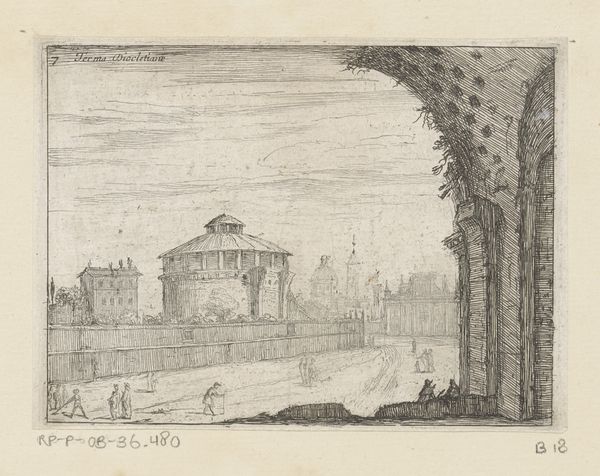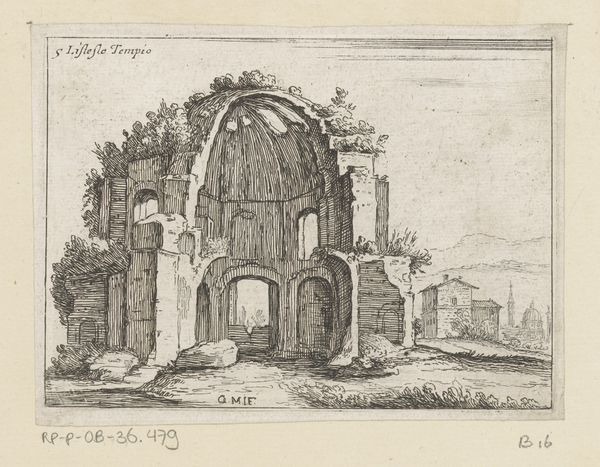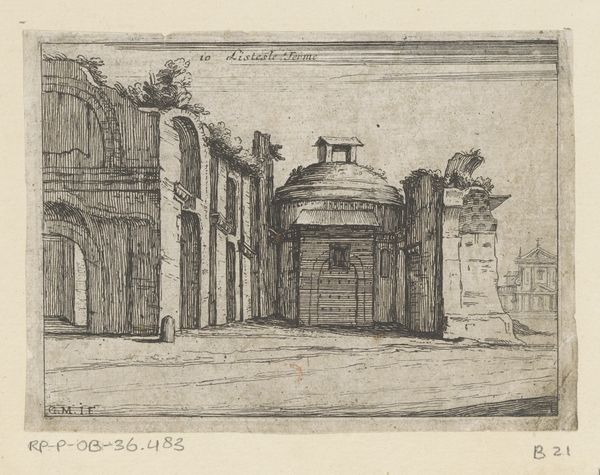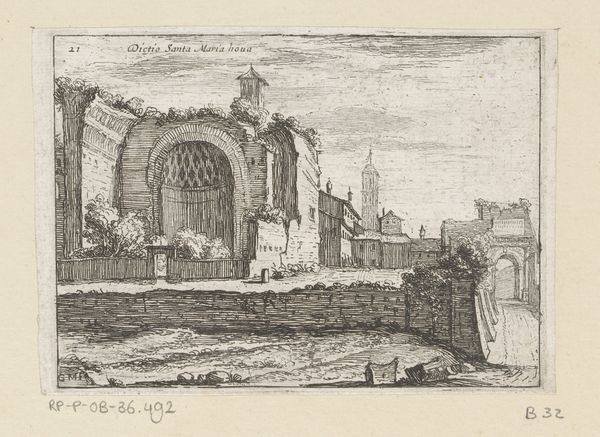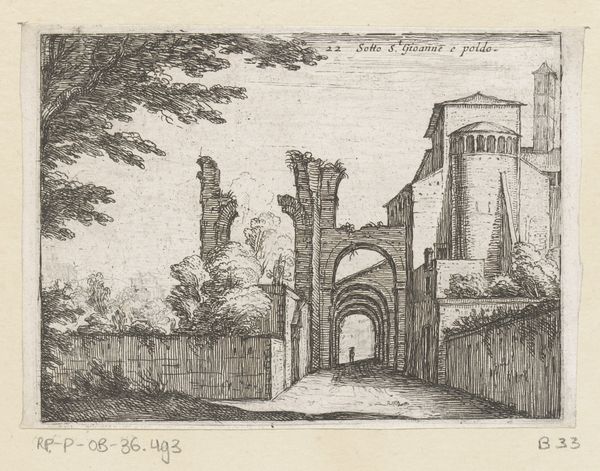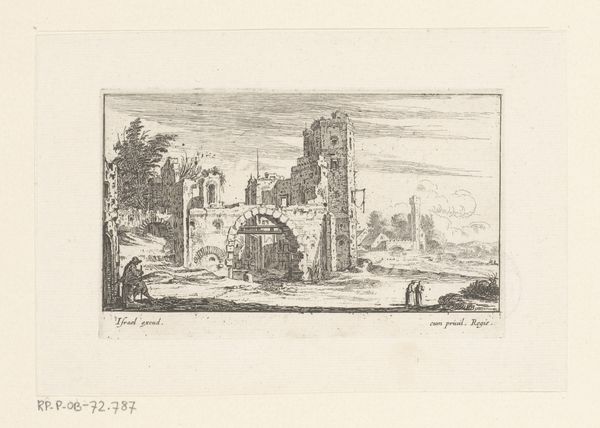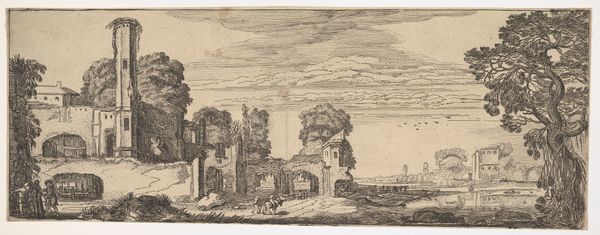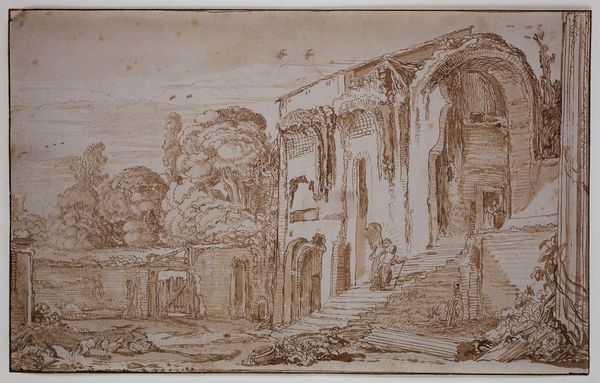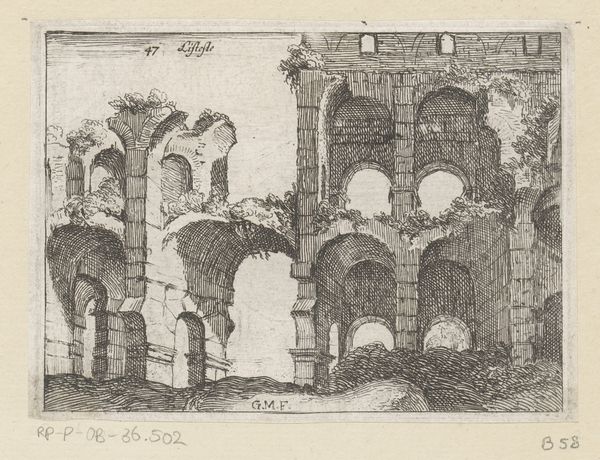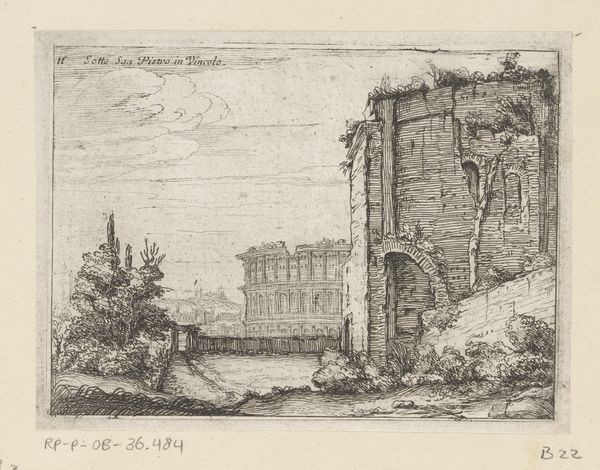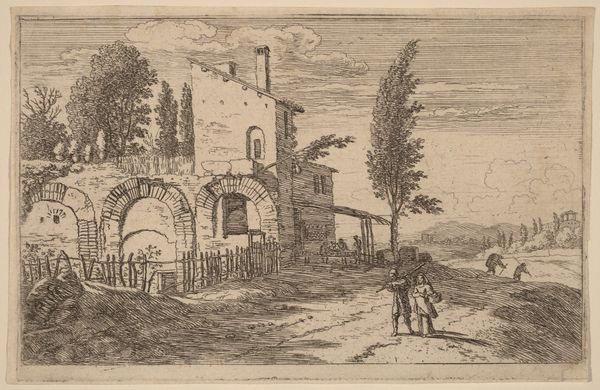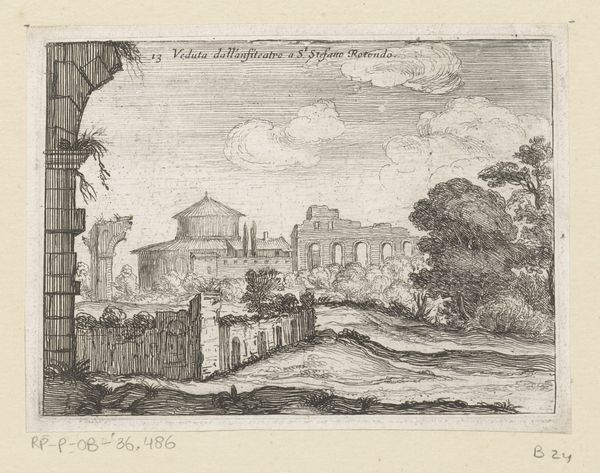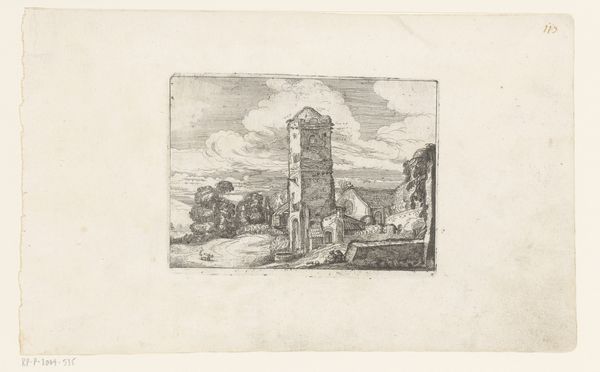
print, ink, pen, engraving, architecture
#
aged paper
#
quirky sketch
# print
#
old engraving style
#
sketch book
#
landscape
#
form
#
romanesque
#
personal sketchbook
#
ink
#
sketchwork
#
ancient-mediterranean
#
pen-ink sketch
#
line
#
sketchbook drawing
#
pen
#
cityscape
#
storyboard and sketchbook work
#
sketchbook art
#
engraving
#
architecture
Dimensions: height 95 mm, width 129 mm
Copyright: Rijks Museum: Open Domain
Giovanni Battista Mercati made this print of the remains of the Baths of Diocletian in Rome using etching techniques sometime between 1591 and 1645. The medium itself – etching – has a fascinating history. It involves coating a metal plate with wax, scratching an image into the wax, and then bathing the plate in acid, which bites away the exposed metal. The plate is then inked and printed. The result is a graphic sensibility with a strong emphasis on line. Etching was an essential tool in the early modern period. As an intaglio process, it allowed artists to produce multiple copies of their work, spreading images and ideas more widely than ever before. While the print is of a ruin, the choice to document it through the relatively new medium of etching reflects a desire to build, to disseminate knowledge, and to participate in a culture of reproduction. It makes you wonder: is the crumbling structure really so different from the method used to depict it?
Comments
No comments
Be the first to comment and join the conversation on the ultimate creative platform.
